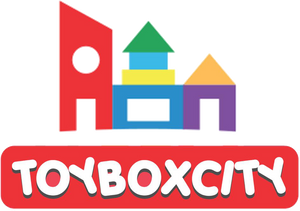FREE Shipping For Orders Over $99 (Exceptions apply)
The Best Sensory Toys for Kids of All Ages
Sensory toys are more than just fun—they are developmental tools that help children explore the world through touch, sight, sound, and movement. These toys stimulate brain growth, improve motor skills, and support emotional regulation. Whether for toddlers discovering textures or older children managing stress, sensory play offers benefits across all ages. Parents, educators, and therapists alike recognize that sensory toys can transform playtime into meaningful learning experiences.
Sensory Toys for Babies and Toddlers
In the earliest years, babies and toddlers learn primarily through sensory exploration. Toys designed for this age group introduce textures, sounds, and colors that encourage curiosity and help build foundational skills. They also promote bonding between caregivers and children by turning play into shared discovery.
Examples of sensory toys for babies and toddlers:
-
Dual Rattle and Teether – Combines soothing relief with auditory stimulation.
-
Soft Sensory Balls – Textured surfaces encourage grasping and tactile exploration.
-
Water Play Mats – Visual stimulation with floating shapes.
-
Stacking Cups – Promote hand‑eye coordination and problem‑solving.
These toys nurture curiosity and support developmental milestones, making them essential for early learning. They lay the groundwork for motor skills, language development, and social interaction, ensuring that playtime is both fun and educational.
Calming Sensory Toys for Preschoolers
Preschoolers often need tools to manage emotions and energy. Calming sensory toys provide comfort and focus, helping children transition between activities and regulate their feelings.
Examples of calming toys:
-
Weighted Plush Animals – Offer soothing pressure for relaxation.
-
Liquid Motion Bubblers – Visual calm through slow, colorful movement.
-
Fidget Spinners – Simple repetitive motion helps with focus.
-
Sensory Bottles – Filled with glitter or beads for visual engagement.
These toys help preschoolers regulate emotions, making quiet time easier and transitions smoother. They encourage self‑soothing and teach children how to manage stress in healthy ways.
Movement‑Based Sensory Toys
Active play is critical for children’s growth. Movement‑based sensory toys channel energy while improving coordination, balance, and strength.
Examples of movement toys:
-
Mini Trampolines – Encourage balance and physical activity.
-
Balance Boards – Develop core strength and stability.
-
Jump Ropes – Improve rhythm and motor planning.
-
Ride‑On Toys – Combine fun with gross motor development.
By integrating movement, these toys support physical health and sensory integration. They help children release energy constructively while building confidence in their physical abilities.
Tactile Exploration Toys
Tactile toys allow children to explore textures and build fine motor skills. They encourage creativity and strengthen hand muscles, preparing kids for writing and daily tasks.
Examples of tactile toys:
-
Kinetic Sand – Moldable and soothing to touch.
-
Play Dough – Encourages creativity and dexterity.
-
Textured Tiles – Introduce different surfaces for sensory learning.
-
Fabric Swatches – Teach texture recognition.
Tactile play fosters imagination and problem‑solving. It also provides a calming outlet for children who find comfort in repetitive, hands‑on activities.
Visual and Light‑Based Sensory Toys
Visual stimulation helps children focus and engage with their environment. Light‑based toys are especially effective for calming overstimulated children.
Examples of visual toys:
-
Glow Sticks – Fun for nighttime play.
-
Light‑Up Sensory Balls – Combine movement with visual appeal.
-
Projector Lamps – Create calming environments.
-
Fiber Optic Wands – Stimulate visual tracking.
These toys enhance attention and provide calming sensory input through light and color. They are particularly useful for bedtime routines or quiet play.
Auditory Sensory Toys
Sound‑based toys encourage listening skills, rhythm recognition, and language development. They help children connect sound with meaning and expression.
Examples of auditory toys:
-
Musical Instruments – Drums, xylophones, and shakers.
-
Sound Puzzles – Reinforce learning with auditory cues.
-
White Noise Machines – Provide calming background sounds.
-
Talking Toys – Support language development.
Auditory play strengthens communication skills and helps children develop an appreciation for music and rhythm.
Sensory Toys for Older Kids and Teens
Older children and teens benefit from sensory toys that reduce stress and improve focus. These toys provide coping strategies for academic and social challenges.
Examples of toys for older kids:
-
Stress Balls – Relieve tension during study.
-
Slime Kits – Fun, tactile stress relief.
-
Puzzle Cubes – Encourage problem‑solving.
-
Noise‑Canceling Headphones – Support focus in noisy environments.
These toys help teens manage anxiety, improve concentration, and find healthy outlets for stress.
Sensory Toys for Special Needs
Children with autism, ADHD, or sensory processing disorders often benefit greatly from sensory toys. These tools provide therapeutic support and help children thrive.
Examples of supportive toys:
-
Chewelry (Chewable Jewelry) – Safe oral sensory input.
-
Weighted Blankets – Promote calm and sleep.
-
Therapy Putty – Builds hand strength and focus.
-
Sensory Swings – Provide vestibular input for regulation.
These toys offer therapeutic benefits, helping children manage sensory sensitivities and participate more fully in daily life.
Conclusion
Sensory toys are versatile tools that support development, emotional regulation, and creativity across all ages. From rattles for babies to stress‑relief toys for teens, they provide meaningful experiences that shape learning and well‑being. By choosing the right sensory toys, parents and educators can nurture growth, encourage exploration, and create environments where every child feels engaged and supported.

